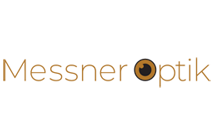Myopia-Management
My child is myopic. What now?
Myopia or nearsightedness is becoming more and more common. Not only this, but also the degree of myopia is becoming more and more extreme. Currently, 50% of young people in Europe are already short-sighted. In Asia it is even more than 80%. Researchers predict that by 2050 almost half of the entire world population will be nearsighted.
The risks
Nearsightedness is an optical deviation and is not dangerous in itself as long as its intensity remains below -6.00dpt (diopters). Deviations above -6.00dpt are called high myopia. Research has shown that people with myopia between -5.00dpt and -7.00dpt have a twenty times higher risk of retinal detachment.
The risk of glaucoma (increased intraocular pressure), cataracts and other eye diseases is also significantly higher. Especially in children, it is important to avoid the risk of progressive myopia at an early stage.
What should I pay attention to?
Especially children, for whom there is a high probability of developing myopia, it is important to stop the progression of myopia in time and as far as possible. The exact cause of myopia is not yet known, but there are demonstrable factors that play a major role, such as:
- Inheritance: If parents, brothers or sisters are very nearsighted, there is a high risk that the children will also develop myopia. Also check to see if there are any family members suffering from a retinal detachment.
- Ethnic origin: Especially in the Asian region, myopia is very widespread. Up to 80% of the population is myopic.
- Life circumstances: Children who play outside less (no daylight) and spend much more time with their smartphone or tablet develop myopia much faster. Check regularly whether your child has become nearsighted and contact us if necessary.
What can I do for my child?
Unfortunately there is still no permanent remedy to stop myopia completely. But we do offer a range of treatments that can slow the progression of myopia: Myopia management. If the risk is identified in time and treatment is started early, the development of myopia progression can be reduced by up to 50%. It can make a big difference whether your child develops risky myopia of -6.00dpt or "only" low myopia of -3.00dpt.
The Myopia Management Options
1. Lifestyle advice
Our children work continuously on tablets, laptops and smartphones. Through accommodation (adjusting the eye to objects at different distances), the eyes constantly adapt to a nearby point. It has been found that permanent accommodation promotes the development of myopia.
Pay attention to this:
- that your child does not use a laptop, tablet or smartphone for too long
- that your child stays outside for at least two hours a day. Vitamin D and daylight have a positive effect on the development of the retina.
2. Use of Atropine eye drops
Atropine - eye drops are used in ophthalmology for various purposes. Atropine is used, among other things, to relax the eye (pain reduction) in the case of certain eye diseases. Studies have shown that atropine can slow down the increase in myopia. Good short-term results have been achieved. Even very low doses have a positive effect. However, the possible effects and long-term side effects are not yet known.
3. Rodenstock MyCon eyeglass lenses
Conventional single vision lenses ensure sharp vision, but the light is projected in the peripheral area behind the retina and thus gives the eye the incentive to grow further in length, which will result in increasingly severe myopia. With MyCon lenses, your child will have sharp vision and at the same time, the growth of the eye length and thus the progression of myopia will be counteracted. With MyCon lenses, light is diffused in such a way that it hits the eye before it reaches the retina. This contributes decisively to the preservation of vision in children.
4. Optical restoration with orthokeratology lenses
A very effective way to limit progressive myopia is the fitting of orthokeratology contact lenses. These contact lenses are widely used and accepted in Asia. This type of myopia prevention is also rapidly gaining popularity in Europe.
The special, tailor-made shape of the night lenses flattens the cornea in a controlled manner to correct myopia. The shape of the cornea is changed so that children can see clearly during the day without glasses or contact lenses. This process of controlled change is called orthokeratology. In addition to sharp vision during the day, night lenses also have an inhibitory effect on progessive myopia and its consequences.
Further advantages:
- You as a parent can easily check the lenses on your children's eyes in the evening and help your children take off their contact lenses in the morning.
- The handling is usually learned quickly. Children are absolutely able to wear and care for contact lenses. There is no increased risk of infection for the eyes if the instructions are followed exactly.
- Because DreamLite contact lenses are only worn at night, your children can play during the day without annoying glasses or contact lenses.
- The process of controlled change is 100% reversible. So if for some reason you stop wearing DreamLite, the cornea will return to its original shape within a few days and you can use the "old" contact lenses or "old" glasses..
5. Supply with soft contact lenses
A specially developed correction design for soft contact lenses (distance correction in the centre, near correction in the periphery) also has a positive effect on myopia reduction. Results similar to those obtained when wearing night lenses have been achieved.
Do you have any questions? Call us or book a personal consultation right away.



